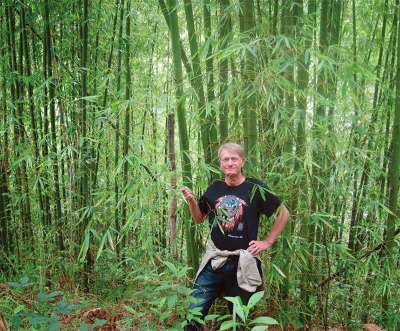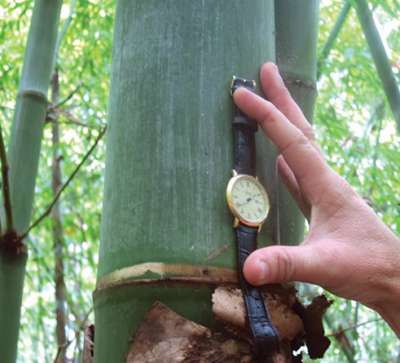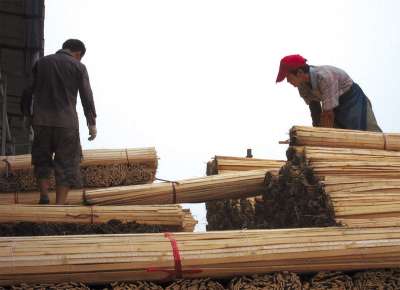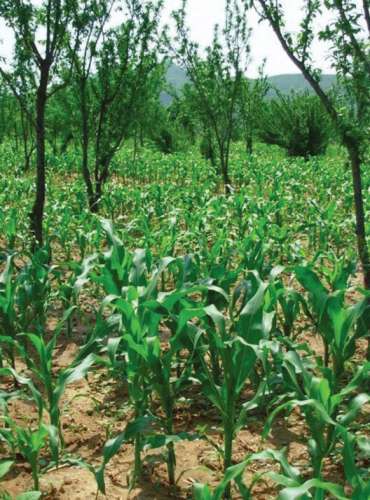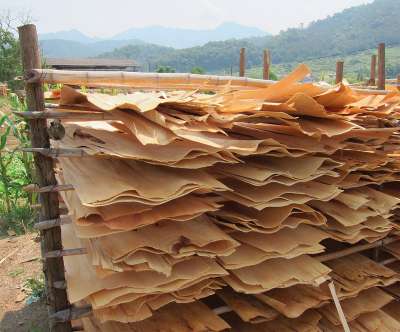
Years ago, when I was on the Yale campus for a half-year teaching gig, my colleague Yajie Song called and asked, “How’d you like to go to China?” My immediate response was, “When do we leave?” That conversation opened the door to several visits to China. Here are a few highlights that touch on just a small part of China’s immense regional diversity.
Fujian
My trip to Fujian Province was especially interesting as it introduced me to something I was entirely unfamiliar with: bamboo. Fujian Province has always been outward-looking, and its principal port, Fuzhou, was familiar to nineteenth-century New England merchants who were involved in the Old China Trade. On an airport bus to the business district after a late-night arrival, I was impressed by the immense port facilities, whose seemingly endless lights were a colorful spectacle. The next day, we visited the “bamboo sea” near Sanming. It’s one of several bamboo seas in China, none of which are actual seas – rather, they are extensive tracts of bamboo monoculture. Fujian is said to lead the country in the production of bamboo shoots, the only part of the plant that is edible to humans. Part of your Friday evening Chinese takeout may have come from these hills.
The plants are intensively managed, including regular weeding and careful harvesting of new shoots when they’re ready for market. The larger stems often grow to be “King Bamboo” poles, and there are competitions to grow the biggest ones. At the site I visited, the farmers had laboriously constructed a pool atop a ridge to capture rainwater, with plastic hose to channel it to the plants to keep them vigorous during droughts. Bamboo is well suited to steep slopes that cannot be tilled, even hillsides too steep for pasture. On slightly milder slopes, I often saw orange groves. On one stop, the harvesters gave us a few free samples.
China is home to an immense diversity of bamboo: some sources list as many as 500 species. Bamboo is a grass, not a tree, and it can grow extremely fast; millions of acres have been planted in China, and scientific and practical work on cultivation and utilization are far advanced. Bamboo is used for many things, especially construction, both locally and abroad. Large buildings throughout China have roofs supported by bamboo trusses. And prefinished bamboo flooring is stocked in large US building-product stores. The plant is even dried and converted to a char for medicinal and other uses. Scrap stems are burned for fuel. Fans of Jackie Chan may remember one action sequence: a fight takes place on a set of bamboo scaffolding erected on a tall building. In the hills, trucks carrying long lengths of bamboo are a common sight on the narrow roads.
Yunnan
On a brief visit to Yunnan Province, I found myself feeling an odd discomfort that I couldn’t put my finger on until someone told me that we were not far from Vietnam. Then it hit me: this countryside looked a lot like places I’d seen as a soldier. Villages, hills, rice paddies – it all seemed eerily familiar. Yet there were two differences: corn was growing everywhere, and the hillsides were covered by tea plantations. We also visited highly productive bamboo stands, some on steep hills that were formerly pastured.
On returning from a visit to bamboo farmers in the hills, we came upon an amazing sight – at least, to an American wood products guy. There was a large field covered in racks where slices of veneer were drying in the sun. I had read about this process but could hardly believe it was real until it was right before my eyes. Just beyond the huge field stood the mill and the log yard. The veneer was made from plantation-grown poplar; the trees reach a suitable size in little more than 10 years when properly cared for. Between the poplar and the bamboo, forests contribute to prosperity in rural China. In the front yards of neighborhood homes were stacks of bricks and heaps of sand and other building materials, sure signs of better times ahead.
Hebei
On one visit to the Beijing Forestry University to deliver a series of lectures, several graduate students were assigned to take me on a daytrip. “Where to go?” they asked. I responded that I wanted to get out into a small rural community and see farms and trees. They looked at each other in astonishment and asked, “Why do you want to do such a thing?” I was a forester, I told them, and I’d seen enough of the big city.
In a way, I was testing the system. I had been told by a colleague that Chinese hosts will almost never let you off main roads, and you always have an official handler accompanying you in public. But there was never any sense of that on this trip – at least, I was never told that any side road was off limits.
So we journeyed by train and bus to a village just beyond the Beijing municipal limits. At the small place where we had lunch, a multi-crop field was growing corn and trees together. With all hand labor, this can be done. The shade is light; leaf litter from the trees builds organic matter in the soil. On many of the low stone and mud buildings were small solar panels for street lighting, even though the streets were unpaved and dusty. Larger buildings had rooftop solar water heaters. From their longstanding use of fast-growing trees to their more recent adoption of environmentally friendly technology, there is much to learn from these small Chinese villages where Western tourists seldom go.



